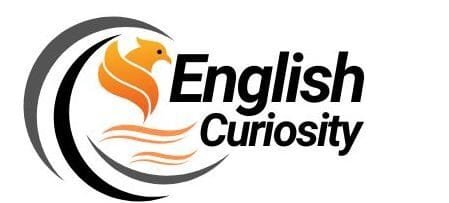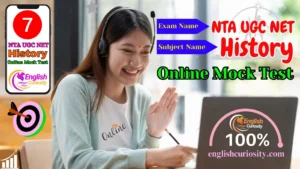2025 NTA UGC Net History Online Mock Test 7 held in India: 25 multiple-question answers from the history topic of the UGC NET Exam are given below.
NTA UGC Net History Online Mock Test 7
| Mock Test Set | 7 |
| Question Type | MCQ |
| Medium | Online |
| Subject | History |
| Exam | UGC Net |
| Question | 25 |
| Marks | 1 |
First Part: UGC Net History Online Mock Test
1. Which of the following conservancy measures had not been taken by the Harappans?
- (a) System of drainage
- (b) Dustbins
- (c) Rubbish chutes
- (d) Public toilets
Ans. (d) Public toilets
2. four outposts of the Indus Valley Civilization are:
- (a) Manda in the north, Daimabad in the south, Hulas and Alamgirpur in the east and Suktagendor in the west
- (b) Manda in the east, Daimabad in the south, Holas in the north, and Surkotada in the west
- (c) Manda in the north, Alamgirpur in the east, Shortughai in the west, and Daimabad in the south
- (d) Alamgirpur in the north, Kayatha in the south, Manda in the east, and Kuntasi in the west
Ans. (a) Manda in the north, Daimabad in the south, Hulas and Alamgirpur in the east, and Suktagendor in the west
3. The worship of fire is proved by the discovery of fire altars at :
- (a) Surkotada and Rangpur
- (b) Rangpur and Alamgirpur
- (c) Lothal and Kalibangan
- (d) Chanhudaro, Kayatha, Prabhas and Daimabad
Ans. (c) Lothal and Kalibangan
4. The spread of the Harappan civilization is coterminous with the following:
- (a) Wheat producing zone
- (b) Fertility of soil
- (c) Irrigation facilities
- (d) Availability of raw materials and minerals
Ans. (a) Wheat producing zone
5. Two major purposes for the construction of fortification in the Harappan towns were :
- (a) Collection of customs and toll tax
- (b) Safety from robbers and cattle raiders and protection against floods
- (c) To check entry of unauthorized persons in the city and ensure safety against enemy attacks
- (d) To keep the growth of cities within limits and preserve municipal control
Ans. (b) Safety from robbers and cattle raiders and protection against floods
Second Part: UGC Net History Online Mock Test
6. Which of the following statements regarding Kalibangan is not true?
- (a) The lower town was fortified
- (b) Drying of the River Ghaggar caused its decline
- (c) The only site from which traces of plowing the fields have been found
- (d) Pre-Harappan fire altars have been discovered
Ans. (d) Pre-Harappan fire altars have been discovered
7. The Harappan civilization roughly extended over an area of :
- (a) 1.3 million sq km
- (b) 2.5 million sq km
- (c) 0.75 million sq km
- (d) 0.65 million sq km
Ans. (a) 1.3 million sq km
8. At which of the following sites has a pre-Harappan settlement not been found?
- (a) Dholavira
- (b) Kot Diji
- (c) Kalibangan
- (d) Harappa
Ans. (a) Dholavira
9. Which of the following is not a feature of the coastal towns of the Harappan civilization?
- (a) To exploit locally available raw materials (shell, minerals, etc.)
- (b) To act as ports for the Gulf region
- (c) To act as an entrepot of trade and commerce for the inland towns
- (d) To act as nucleus cities for import and export
Ans. (d) To act as nucleus cities for import and export
10. Sir Mortimer Wheeler, referring to the origin of the Harappan civilization, said: “The Indus civilization may, in origin, best be visualized as the sudden offspring of opportunity and genius… the idea of civilization came to the land of the Indus from the land of the twin rivers.”. The statement refers to the colonization of the Harappan settlements by the people.
- (a) Sumerian
- (b) Mesopotamian
- (c) Persian
- (d) Dravidian
Ans. (b) Mesopotamian
Third Part: UGC Net History Online Mock Test
11. Harappans had a highly skilled knowledge of metallurgy, which is evidenced by the
- (a) Use of various metals, such as copper, tin, bronze, gold, etc. by the Harappan people
- (b) Discovery of furnaces from various Harappan sites
- (c) Mixture of copper and tin in ideal proportion for bronze implements
- (d) Knowledge of smelting techniques for various metals
Ans. (c) Mixture of copper and tin in ideal proportion for bronze implements
12. A Harappan city, which had three divisions-christened ‘citadel’ or ‘acropolis’, ‘middle town’, and ‘lower town’ with elaborate gate complexes on its fortifications, was:
- (a) Kalibangan
- (b) Banawali
- (c) Dholavira
- (d) Kuntasi
Ans. (c) Dholavira
13. The two most thickly populated cities of the Harappan civilization were:
- (a) Mohenjodaro and Harappa
- (b) Kalibangan and Lothal
- (c) Ropar and Rangpur
- (d) Lothal and Desalpur
Ans. (a) Mohenjodaro and Harappa
14. One aspect of Harappan life which formed the basis of the Harappan system, but about which very little or nothing is known, is
- (a) Rural life
- (b) Cattle breeding
- (c) Transport and communication
- (d) Demographic patterns
Ans. (a) Rural life
15. The decline of the Harappan civilization was:
- (a) Irregular and was caused by different factors in different areas
- (b) Abrupt and Catastrophic
- (c) A result of cultural transformation
- (d) On account of the environmental and ecological syndrome.
Ans. (a) Irregular and was caused by different factors in different areas
Fourth Part: UGC Net History Online Mock Test
16. The latest Harappan site discovered in Gujarat is:
- (a) Dholavira
- (b) Khandia
- (c) Kuntasi
- (d) Manda
Ans. (a) Dholavira
17. Which of the following was not essentially a Harappan port?
- (a) Lothal
- (b) Balakot
- (c) Suktagendor
- (d) Surkotada
Ans. (d) Surkotada
18. The Harappan civilization does not have homogeneity or uniformity in:
- (a) Weights and Measures
- (b) Cereal Crops
- (c) Burial Practices
- (d) Both (b) and (c) above
Ans. (d) Both (b) and (c) above
19. At Harappa, well-laid furnaces of different shapes and sizes have been found. They are associated with industries.
- (a) Seatite and faience
- (b) Metallurgy
- (c) Both (a) and (b) above
- (d) Jewelry
Ans. (c) Both (a) and (b) above
20. The Harappan cities were ruled by-
- (a) Monarch
- (b) Priest King
- (c) Merchant Oligarchy
- (d) Not Known
Ans. (d) Not Known
Fifth Part: UGC Net History Online Mock Test
21. The Harappan agricultural economy was mainly based on
- (a) Crop rotation
- (b) Rain-fed cultivation
- (c) Wheat and associated winter crops
- (d) Dry farming
Ans. (c) Wheat and associated winter crops
22. Which of the following was not a major industrial town of the Harappan civilization?
- (a) Lothal
- (b) Chanhudaro
- (c) Harappa
- (d) Kalibangan
Ans. (d) Kalibangan
23. The entry port for trade between the Indus trading centers and Mesopotamia was:
- (a) Elam
- (b) Oman
- (c) Bahrain
- (d) Afghanistan
Ans. (c) Bahrain
24. Wheeler points out some kind of military assault or mass execution of the Harappan people based on skeletons found at:
- (a) Mohenjodaro
- (b) Harappa
- (c) Chanhudaro
- (d) Desalpur
Ans. (a) Mohenjodaro
25. Who among the following has been called the father of Indian prehistory?
- (a) Colonel Meadows Taylor
- (b) Robert Bruce Foote
- (c) Alexander Cunningham
- (d) Sir John Marshall
Ans. (b) Robert Bruce Foote

